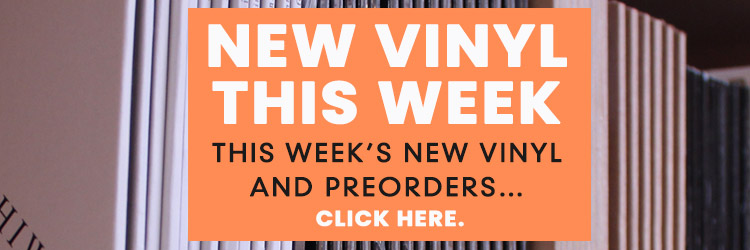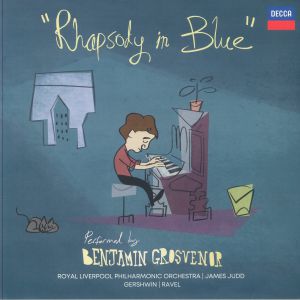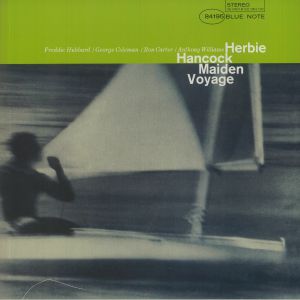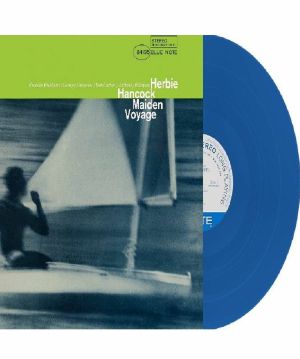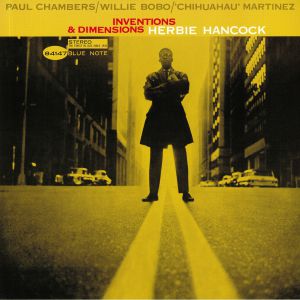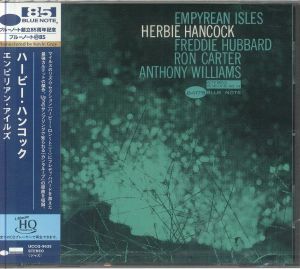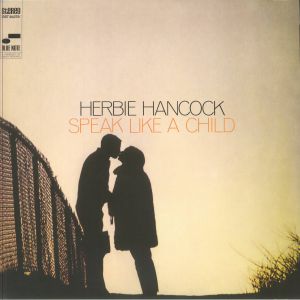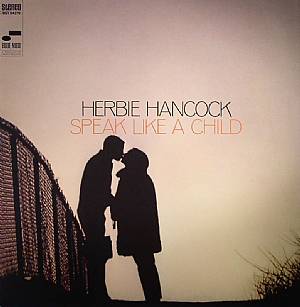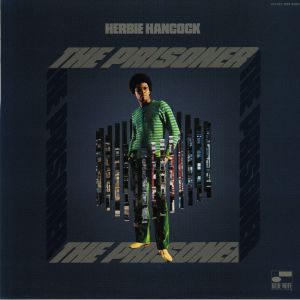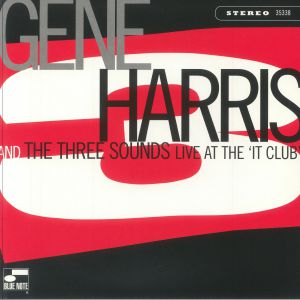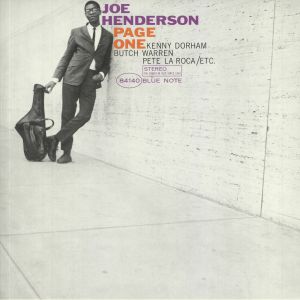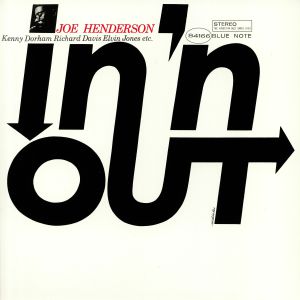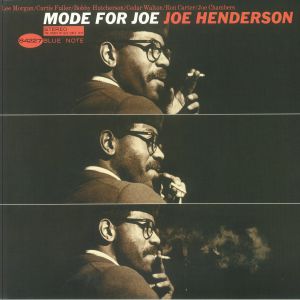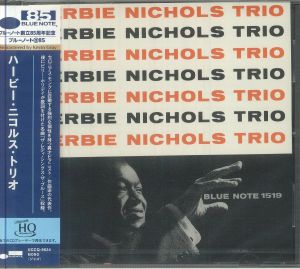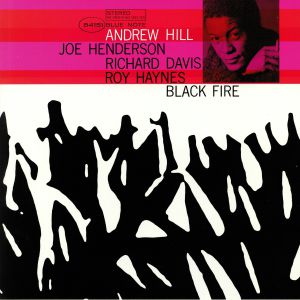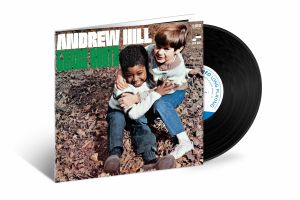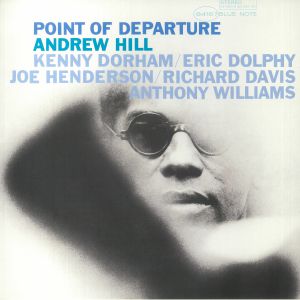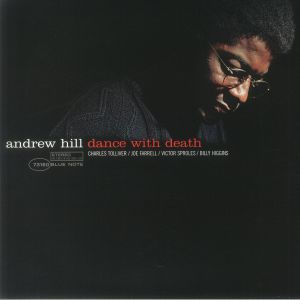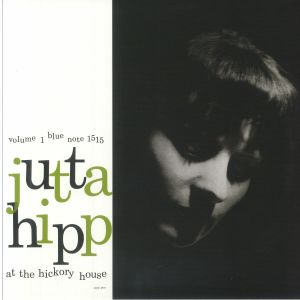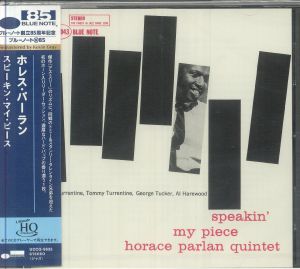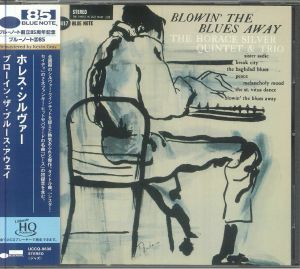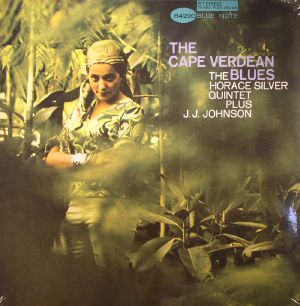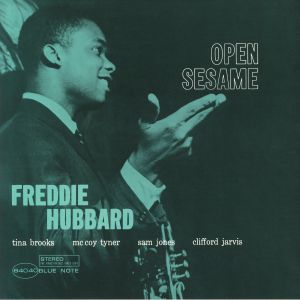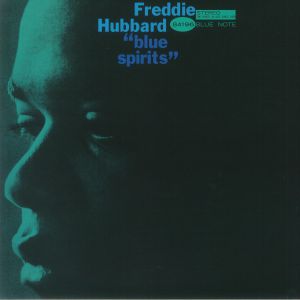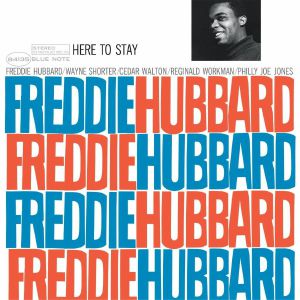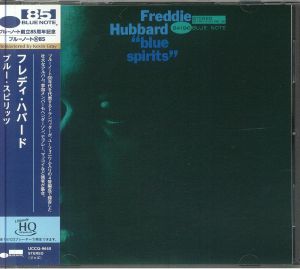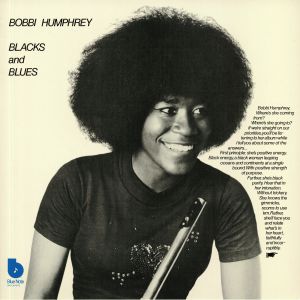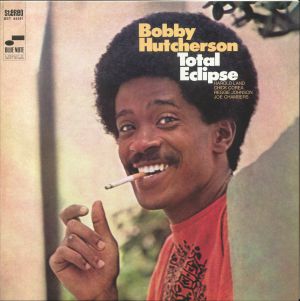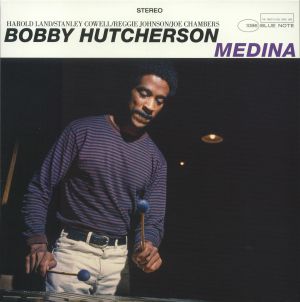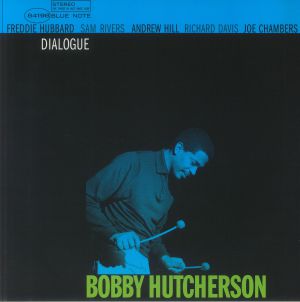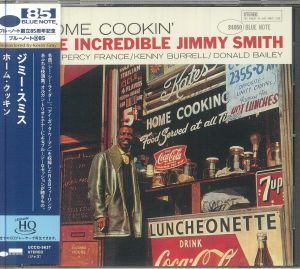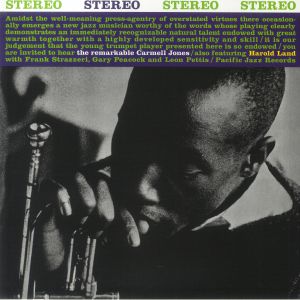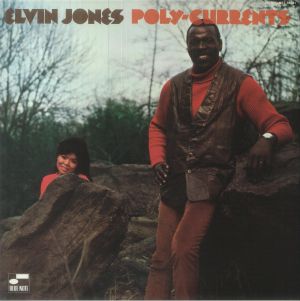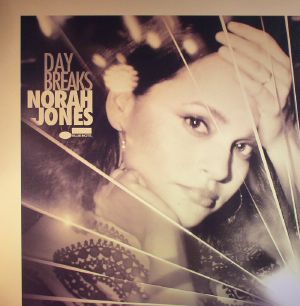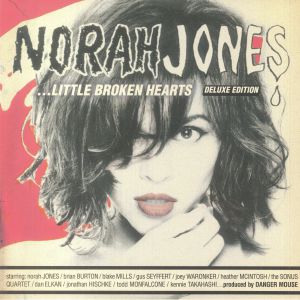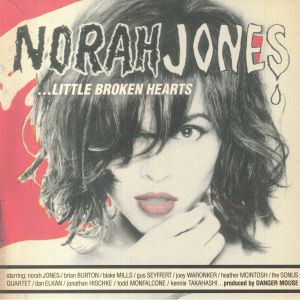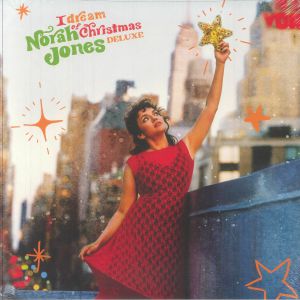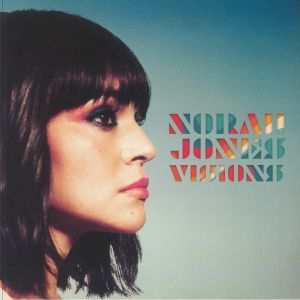Filter
在庫状況
Release Date
アーティスト
レーベル
リリースタイトル
値段
タグ
Back catalogue: Funk Soul & Jazz
Juno's full catalogue of Funk Soul & Jazz
アルバム
Introducing Johnny Griffin (reissue) (heavyweight vinyl LP)
Cat: 774506 4. Rel: 14 Jun 19
Played by: Juno Recommends Jazz
in stock $29.27
Benjamin GROSVENOR / VARIOUS
Rhapsody In Blue (100th Anniversary Edition) (limited translucent blue vinyl LP)
Cat: 485493 0. Rel: 25 Apr 24
Review: Benjamin Grosvenor's latest release, the second installment in his Decca contract, showcases his exceptional talent in works for piano and orchestra. Teaming up with the Royal Liverpool Philharmonic under James Judd's baton, Grosvenor delivers captivating interpretations of Saint-Saens' Second Piano Concerto, Ravel's G Major Concerto, and Gershwin's iconic Rhapsody in Blue. While the combined choice of repertoire might seem unconventional, Grosvenor's artistry shines through, effortlessly transitioning between the diverse styles of each composer. His refined yet impassioned playing captivates listeners, whether navigating the lyrical passages of Ravel's concerto or infusing Gershwin's jazz-infused melodies with infectious vitality. The accompanying solo 'encores' further showcase Grosvenor's virtuosity, with standout performances of Saint-Saens' 'The Swan,' Ravel's Prelude in A Minor', and Gershwin's 'Love Walked In.' Each piece is delivered with exquisite precision and sensitivity, demonstrating Grosvenor's mastery across a range of repertoire.
… Read more in stock $35.66
Maiden Voyage (Classic Vinyl Series) (limited 180 gram audiophile vinyl LP)
Cat: 359319 6. Rel: 24 Sep 21
Review: Blue Note's Classic Vinyl series is about reissuing vital jazz records on heavyweight vinyl with all new mastering by Kevin Gray of Coherant Audio. Next to get the special treatment it deserves is Herbie Hancock's 1965 classic Maiden Voyage, which is some of the most evocative jazz to have ever been recorded. Net to Hancock, the players were all either present or past members of Miles Davis' quintet, so made for a heavy line-up. Hancock's impressionistic style is here for all to hear with the sublime compositions of 'Dolphin's Dance' and 'Maiden Voyage' and more tumultuous sounds of 'The Eye Of The Hurricane' some of the highlights.
… Read morePlayed by: Juno Recommends Jazz, DJ ROCCA
in stock $25.92
Maiden Voyage (limited 180 gram blue vinyl LP with obi-strip)
Cat: 651174 6. Rel: 07 Nov 24
Review: Herbie Hancock's Maiden Voyage, recorded in 1965, remains a cornerstone of jazz history, capturing the the era's musical evolution. The ensemble, featuring notable players like Freddie Hubbard on trumpet and George Coleman on tenor sax, creates a rich blend of sound that resonates with listeners. Hancock's piano feels more vibrant, with increased dynamic range, while Hubbard and Coleman's horns possess a lifelike clarity with this new pressing. The bass from Ron Carter has a rich pluck and Tony Williams' drumming resonates beautifully as the celebrated pianist navigates a sonic ocean with his stellar MDQ crew, crafting a series of tone poems that evoke the essence of water. Hancock's compositions explore the delicate balance of movement and stillness, with Coleman providing a reassuring anchor amid the chaos. Freddie Hubbard's more disruptive approach contrasts beautifully, adding depth to the texture. The rhythm section is perpetually in motion, embodying the album's theme of fluidity. Tracks like 'Survival of the Fittest' show Hancock's deft architecture, oscillating between chaos and calm, making for a timeless exploration of sound and emotion, a masterpiece that resonates through the ages.
… Read more in stock $31.21
My Point Of View (Tone Poet Series) (reissue) (gatefold 180 gram audiophile vinyl LP)
Cat: 881133. Rel: 30 Oct 20
Played by: Juno Recommends Jazz
in stock $45.14
in stock $31.77
in stock $15.05
Speak Like A Child (Classic Vinyl Series) (gatefold 180 gram audiophile vinyl LP)
Cat: 583203 2. Rel: 18 Apr 24
Review: Speak Like A Child by Herbie Hancock is a groundbreaking album that defies categorization, blending elements of post-bop, modal jazz, and funk into a cohesive and forward-thinking sound only to be slotted into a wide spanning genre like Jazz-Fusion. The title track, 'Speak Like A Child', is a standout composition that highlights Hancock's signature piano playing, characterized by its lyrical melodies and inventive harmonies. The album features intricate arrangements and complex rhythms, with each track offering a unique sonic journey for the listener. Hancock's ability to push the boundaries of traditional jazz while maintaining a deep respect for the genre's roots is clear throughout the album. 'Speak Like A Child' remains a landmark recording in Hancock's discography, cementing his status as one of the most influential figures in modern jazz.
… Read morePlayed by: Juno Recommends Jazz
in stock $29.53
in stock $32.32
The Prisoner (Tone Poet Series) (reissue) (180 gram vinyl LP)
Cat: 847068. Rel: 17 Apr 20
Played by: Juno Recommends Jazz
in stock $32.61
Live At The It Club (reissue) (180 gram audiophile vinyl LP)
Cat: 588079 0. Rel: 19 Sep 24
Review: The Three Sounds, one of Blue Note's most productive acts, evolved significantly by 1970. Under the leadership of pianist Gene Harris, the trio welcomed bassist Henry Franklin and drummer Carl Burnett into its ranks, infusing their blues and gospel foundations with a funkier, more vibrant rhythm. This shift is brilliantly captured in Live at the 'It Club', a rousing live recording that highlights their transformation. The record demonstrates how the trio, especially through Burnett's drumming and Franklin's basslines, pushed their sound into funkier territories while maintaining their soulful hard-bop roots. The rhythm section's infectious groove drives the music, giving it a loose, swinging feel where the groove is paramount. Tracks like 'Funky Pullett' and 'Love for Sale' showcase this new dynamic, where the interplay between the trio adds layers of grit and soul to their performances. Live at the 'It Club' remains a thoroughly enjoyable listen with the trio's unique blend of soul-jazz with a fresh, funky twist proudly presented.
… Read morePlayed by: Juno Recommends Jazz
in stock $30.38
Played by: Juno Recommends Jazz
in stock $28.42
in stock $24.80
Mode For Joe (Classic Vinyl Series) (180 gram audiophile vinyl LP)
Cat: 552425 6. Rel: 15 Feb 24
Review: Released in 1966, Joe Henderson's Mode For Joe is a captivating jazz work that showcases his unparalleled skill and artistry as a saxophonist and composer. It came at a time when Henderson was at the peak of his creative powers and leading a stellar ensemble that included Lee Morgan, Curtis Fuller, and Bobby Hutcherson. From the infectious groove of 'A Shade of Jade' to the haunting beauty of 'Black,' each track offers a mesmerising blend of intricate melodies and vibrant improvisation. Henderson's rich tone and expressive phrasing command attention throughout and it is that which makes Mode For Joe such a well-regarded work that still holds great value today.
… Read morePlayed by: Juno Recommends Jazz
in stock $30.66
Herbie Nichols Trio (Japanese Edition) (UHQ-CD with obi-strip)
Cat: 589039 6. Rel: 21 Feb 25
The Gig
House Party Starting
Chit-Chatting
The Lady Sings The Blues
Terpsichore
Spinning Song
Query
Wildflower
Hangover Triangle
Mine
in stock $17.83
Black Fire (Tone Poet Series) (reissue) (gatefold 180 gram audiophile vinyl LP)
Cat: 775202 1. Rel: 26 Jul 19
Played by: Mukatsuku Records Chart, Juno Recommends Jazz
in stock $34.00
in stock $15.05
Grass Roots (reissue) (Tone Poet Series) (gatefold 180 gram vinyl LP)
Cat: 551876 9. Rel: 17 Jan 25
Review: Andrew Hill's 1968 release merges intricate rhythms with dense, harmonically rich compositions that push the boundaries of jazz. The ensemble, featuring Lee Morgan and Booker Ervin, dives into challenging material that unfolds with every listen. The intricate brass work on tracks like 'Grass Roots' contrasts with the fluidity of Hill's piano, while the rhythm section locks into an effortlessly tight groove. Hill's compositions are complex yet absorbing, blending intellectual depth with emotional resonance, creating a unique sonic landscape that rewards careful listening.
… Read morePlayed by: Kaoru Inoue
in stock $41.52
Point Of Departure (Japanese Edition) (UHQ-CD with obi-strip)
Cat: 589038 4. Rel: 21 Feb 25
Refuge
New Monastery
Spectrum
Flight 19
Dedication
in stock $17.83
Review: American jazz pianist and composer Andrew Hill originally released his Point of Departure album in 1965 on the Blue Note label. He found him playing in a sextet alongside the talented likes of alto saxophonists Eric Dolphy and Joe Henderson plus trumpeter Kenny Dorham and drummer Tony Williams as well as bassist Richard Davis. The record was remastered for a CD release in 1999 by the legendary Rudy Van Gelder and even now it stands apart as a future jazz statement. Some of the tracks are heavy on melancholy to the point that Dorham would occasionally tear up when playing them live.
… Read more in stock $30.94
Dance With Death (Tone Poet Series) (gatefold 180 gram audiophile vinyl LP)
Cat: BST 73160. Rel: 02 Mar 23
Review: Andrew Hill's debut album first came to the jazz giant Blue Note Records in 1963, but it wasn't until almost two decades later in 1980 when the titanic 'Dance With Death' laid down the pianist's existential side. A six-track meander through melodic post-bop, high-note ivory-tinkings, and an unmistakable focus on swing as its rhythmic base, this is almost certainly an unforgettable brush with the other side. Hill's piano is muted yet stark, providing a neatly blue counterpoint to the stereoized and doubled-up trumpet parts played by Charles Tolliver and Joe Farrell.
… Read morePlayed by: Juno Recommends Jazz
in stock $32.61
At The Hickory House Vol 1 (remastered) (180 gram audiophile vinyl LP)
Cat: 588078 9. Rel: 19 Sep 24
Take Me In Your Arms
Dear Old Stockholm
Billie's Bounce
I'll Remember April
Lady Bird
Mad About The Boy
Ain't Misbehavin'
These Foolish Things
Jeepers Creepers
The Moon Was Yellow
Review: Jutta Hipp's At The Hickory House Vol. 1 is a window into a world where jazz piano can swing without fanfare and charm without overstatement. Recorded live in 1956, it captures a moment in time where Hipp, a little-known German transplant to New York, performed with bassist Peter Ind and drummer Ed Thigpen in a tight, energetic trio format. Hipp's lightly-swinging style moves effortlessly through bebop themes and standards, showing a deftness that feels unforced and natural, with just the right amount of flair. This Blue Note Classic Vinyl Edition is about the purity of soundimono, all-analogue, and mastered from the original tapes by Kevin Gray. The 180g pressing at Optimal guarantees that every note rings out with clarity, allowing listeners to experience Hipp's playing as it was meant to be heard. It's as close to stepping into that intimate club setting as you'll get without a time machine. There's a reason this release still resonates: the understated brilliance of a pianist who never quite got the limelight she deserved, but certainly made a lasting impression on those who tuned in.
… Read morePlayed by: Juno Recommends Jazz
in stock $30.38
Speakin' My Piece (remastered) (180 gram vinyl LP)
Cat: 485955 0. Rel: 16 Feb 23
Review: Horace Parlan struck out in style as a bandleader in 1960 with a swathe of albums for Blue Note, amongst which was this dazzling display with his quintet. Parlan was notable as a pianist with a handicap in his hand which gave his playing a distinct cadence, and it certainly never held him back. With Tommy and Stanley Turrentine on trumpet and tenor sax respectively, George Tucker on bass and Al Harewood on drums, Speaking' My Piece' breezes through six light and mellow pieces, faithfully repressed by one of the most important labels in all of jazz history.
… Read morePlayed by: Juno Recommends Jazz
in stock $24.80
Speakin' My Peace (remastered) (UHQ-CD with obi-strip)
Cat: 589039 7. Rel: 27 Feb 25
in stock $15.05
Blowin' The Blues Away (remastered) (UHQ-CD with obi-strip)
Cat: 589039 8. Rel: 28 Feb 25
in stock $15.05
Silver's Serenade (Tone Poet Series) (gatefold 180 gram vinyl LP)
Cat: 459532 0. Rel: 18 Apr 24
Review: Blue Note first delivered Horace Silver's Silver Serenade in 1964, adding yet once more to their precious collection of sonorous soul jazz metals. With Blue Mitchell on trumpet, Junior Cook on tenor saxophone, Gene Taylor on bass, and Roy Brooks on drums, the natural scarcity of this serenade is a cultivated one, not spooned; Silver's naturalistic trumpet sounds carpal and easy, dancing brightly against clear, impeccably recorded contrapuntal movements by Brooks and Taylor.
… Read morePlayed by: Juno Recommends Jazz
in stock $39.00
The Cape Verdean Blues (75th Anniversary Edition) (heavyweight vinyl LP)
Cat: B00225 7901. Rel: 23 Apr 15
Played by: DJ ROCCA
in stock $26.31
Played by: Juno Recommends Broken Beat Nu Jazz
in stock $28.70
Blue Spirits (Tone Poet Series) (gatefold 180 gram audiophile vinyl LP)
Cat: 385683 8. Rel: 04 May 23
Review: Blue Note's Tone Poet series is about reissuing some of the most notable label in its back catalogue on high-quality vinyl with all new mastering jobs. Next up is Freddie Hubbard's Blue Spirits, which was his label debut back in 1950 and saw the prodigious trumpeter kick off what was an astonishing run of records. He was joined by a wealth of talents such as James Spaulding on alto saxophone and flute, Joe Henderson on tenor, Kiane Zawadi on euphonium and Clifford Jarvis on drums, and Big Black on congas. Between them, they provide a rich textured album full of dynamic horns and evocative originals.
… Read morePlayed by: Juno Recommends Jazz
in stock $37.35
Here To Stay (Classic Vinyl Series) (180 gram audiophile vinyl LP)
Cat: 651496 5. Rel: 16 Jan 25
Review: Recorded in 1962, this album captures Hubbard at the peak of his powers, his fiery trumpet soaring alongside a stellar lineup that includes Wayne Shorter, Cedar Walton, Reggie Workman and Philly Joe Jones. From the explosive opener, 'Philly Mignon', to the tender beauty of 'Body and Soul', the album showcases Hubbard's versatility and masterful command of the trumpet. This all analogue reissue, mastered by Kevin Gray from the original master tapes, really captures the energy and intimacy of this classic session.
… Read more in stock $30.38
Blue Spirits (Japanese Edition) (UHQ-CD with obi-strip)
Cat: 589717 3. Rel: 21 Feb 25
in stock $17.83
in stock $28.70
The Kicker (Tone Poet Series) (reissue) (gatefold 180 gram audiophile vinyl LP)
Cat: 865925. Rel: 11 Sep 20
Played by: Juno Recommends Jazz
in stock $45.69
in stock $15.05
Oblique (Tone Poet Series) (gatefold 180 gram audiophile vinyl LP)
Cat: 884051. Rel: 13 Nov 20
Review: The most celebrated jazz vibraphonist of them all is Bobby Hutcherson. Oblique was one of many high water marks of the Blue Note man, and it featured Herbie Hancock, Albert Stinson and Joe Chambers on the original session recorded in 1967. The album was only the second time Bobby played as part of a quartet and it received rave reviews at the time for its sophisticated but accessible sound. Laid back, lyrical and subdued in sound, the album touches on funky styles and jazz-rock influences with impeccable production from the legendary Rudy Van Gelder studio in New York.
… Read more in stock $41.52
Happenings (Classic Vinyl Series) (180 gram audiophile vinyl LP)
Cat: 583202 8. Rel: 18 Apr 24
Review: Bobby Hutcherson's iconic Happenings is a mesmerizing jazz opus that even now all these years later still brims with innovation and emotion. Released originally in 1966, the record showcases Hutcherson's mastery of the vibraphone and how he effortlessly weaves intricate melodies with a vibrant rhythmic pulse. Backed by a stellar ensemble including the one and only Herbie Hancock, Hutcherson crafts a sonic landscape that is both sophisticated and accessible. Tracks never fail to captivate with their dynamic interplay and infectious grooves, while reflective pieces are also included to offer moments of introspection. Happenings then is a standout from an unparalleled talent.
… Read morePlayed by: Juno Recommends Jazz
in stock $31.21
Total Eclipse (Tone Poet Series) (gatefold 180 gram audiophile vinyl LP)
Cat: 459532 1. Rel: 02 May 24
Review: Bobby Hutcherson's Total Eclipse is a seminal work in the post-bop jazz genre. Released in 1968, the album showcases Hutcherson's masterful vibraphone playing and his innovative approach to composition which creates a sense of mystery and wonder. 'Herzog' is a up-tempo number, with Hutcherson's vibraphone taking a more prominent role. The track features some blistering solos from Hutcherson and his fellow musicians, including pianist Herbie Hancock and bassist Ron Carter. 'Matrix' is a complex and challenging piece that showcases Hutcherson's experimental side. The track features a variety of odd time signatures and dissonant harmonies, but Hutcherson's playing is always melodic and accessible. 'Same Shame' is a more traditional jazz ballad, with Hutcherson's vibraphone playing taking a more subdued role. The track is a showcase for Hutcherson's lyrical and sensitive playing. The album closes with 'Pompeian,' a haunting and atmospheric piece that recalls the title track. Total Eclipse is a masterpiece of post-bop jazz.
… Read morePlayed by: Juno Recommends Jazz
in stock $43.19
Medina (Tone Poet Series) (180 gram audiophile vinyl LP)
Cat: 484985 6. Rel: 01 Aug 24
Review: Bobby Hutcherson's innovative 1969 session Medina features a stellar lineup with Harold Land on tenor saxophone and flute, Stanley Cowell on piano, Reggie Johnson on bass, and Joe Chambers on drums all joining the legendary vibraphonist. The album showcases original compositions by Hutcherson, Cowell and Chambers and was recorded on August 11, 1969 at the Van Gelder Studio, Englewood Cliffs, New Jersey. This special reissue comes as part of the Tone Poet series produced by Joe Harley and mastered by Kevin Gray from the original analog master tapes.
… Read more in stock $40.69
Dialogue (Tone Poet Series) (gatefold 180 gram audiophile vinyl LP)
Cat: 550597 4. Rel: 31 Oct 24
Review: Vibraphonist Bobby Hutcherson's 1965 debut, Dialogue, showcases his adventurous spirit. Already a versatile sideman on albums like Idle Moments and Out To Lunch, Hutcherson steps into the spotlight with a sextet featuring jazz luminaries Freddie Hubbard, Sam Rivers, Andrew Hill, Richard Davis, and Joe Chambers. Dialogue captures Hutcherson's more adventurous leanings, pushing the boundaries of his instrument and the genre. This Tone Poet Vinyl Edition, meticulously mastered by Kevin Gray from the original analogue tapes, offers a pristine listening experience. Pressed on 180g vinyl at RTI and packaged in a deluxe gatefold tip-on jacket, this reissue is a must-have for any serious jazz aficionado. It's a chance to hear a master musician at his most innovative and expressive.
… Read morePlayed by: Juno Recommends Funk, Juno Recommends Jazz
in stock $41.52
Home Cookin' (remastered) (UHQ-CD with obi-strip)
Cat: 589040 0. Rel: 28 Feb 25
in stock $15.05
in stock $14.49
Freedom Sound (Tone Poet Series) (180 gram vinyl LP)
Cat: 551877 5. Rel: 17 Jan 25
Review: The Jazz Crusaders' Freedom Sound blends hard bop and soul-jazz in a way that feels both fresh and timeless. The band delivers a tight, energetic performance, with each member adding their distinct touch to the album's punchy grooves. The horns are sharp and emotive, while the rhythm section locks in with precision, creating a perfect backdrop for the solos. Tracks like 'The Thrust' showcase their ability to seamlessly merge complexity with accessibility, making this a standout album that defines their early sound. It's a work that thrives on its energy and bold experimentation.
… Read more in stock $40.69
The Remarkable Carmell Jones (Tone Poet Series) (180 gram vinyl LP + insert)
Cat: 387984 2. Rel: 02 Mar 23
Review: Carmell Jones' 'The Remarkable Carmell Jones' is a masterpiece of hard bop, reissued from the 1961 debut and which showcases the trumpet virtuoso and Kansas City-born musician's leagues-beyond talent on the brasses. Released as part of the Tone Poet Series on Blue Note - which aims to comprehensively reissue select LPs from the Blue Note catalog in perfect detail, to the point of never needing another reissue again - the LP once more recalls Jones' inventive and mark-making solos, backed by a stellar lineup of musicians including Harold Land and Frank Strazerri.
… Read morePlayed by: Juno Recommends Jazz
in stock $39.30
Poly Currents (Tone Poet Series) (gatefold 180 gram audiophile vinyl LP)
Cat: 452621 6. Rel: 04 Jan 24
Review: Harking yet another Tone Poet 2024 edition to come, comes this new forthcoming reissue from the esteemed master drummer Elvin Jones: Poly-Currents. After his six years with the seminal John Coltrane Quartet, Jones signed with Blue Note in 1968 and began building his own career as a bandleader. His first two albums for the label were spare trio outings - Puttin' It Together and The Ultimate - both featuring saxophonist Joe Farrell and bassist Jimmy Garrison. For 1969's unfettered post-bop exploration Poly-Currents, Jones expanded his ensemble with additional woodwinds and percussion while still maintaining spacious realms for the musicians to delve into on modal band member originals including 'Agenda,' 'Agappe Love,' 'Mr. Jones,' and 'Whew'. Jones is joined throughout by a cast that includes Farrell on tenor saxophone, English horn and flutes, George Coleman on tenor saxophone, Pepper Adams on baritone saxophone, Fred Tompkins on flute, Wilbur Little on bass and Cuban conguero Candido Camero.
… Read morePlayed by: Juno Recommends Jazz
in stock $43.19
Played by: Juno Recommends Jazz
in stock $31.21
Little Broken Hearts (Deluxe Edition) (trifold 3xLP)
Cat: 550477 2. Rel: 01 Jun 23
in stock $53.02
in stock $12.25
in stock $27.59
in stock $30.66
in stock $30.66

 USD
USD




